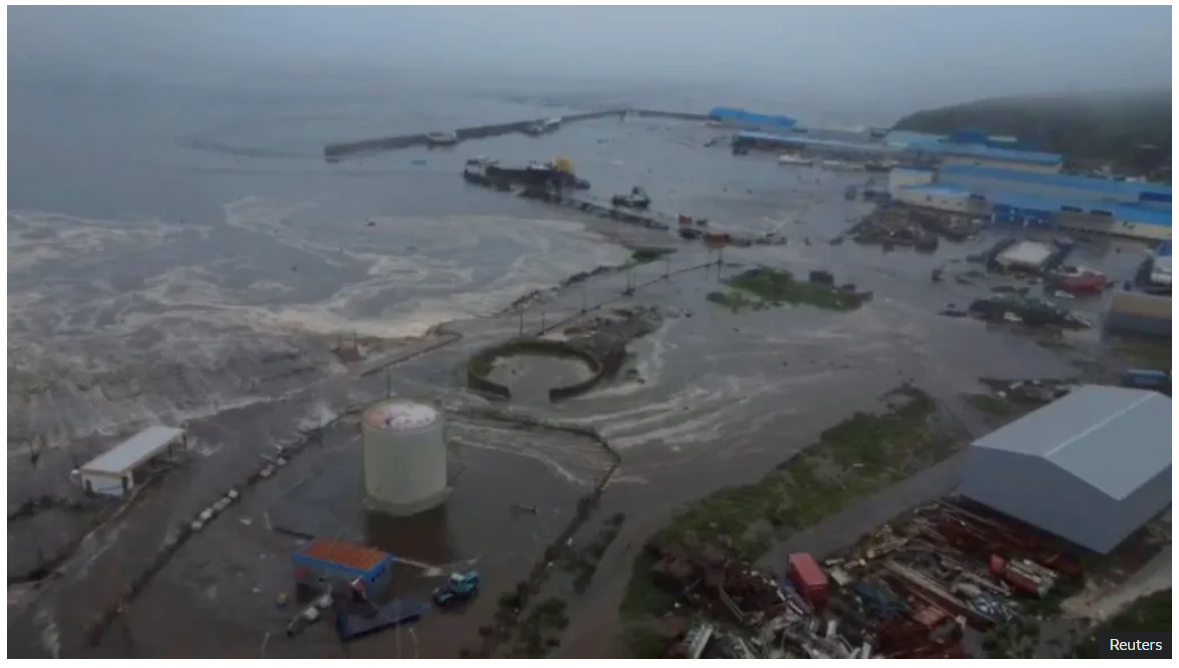
G-Union
News
Jul 31, 2025

PETROPAVLOVSK-KAMCHATSKY, Russia – July 30, 2025 – A colossal earthquake, registering a magnitude of 8.8, struck off Russia's remote Kamchatka Peninsula early Wednesday, unleashing a powerful tsunami that impacted coastlines across the Pacific and prompted widespread alerts. The tremor, one of the strongest recorded in decades, has caused injuries, damaged buildings, and forced evacuations in Russia and beyond.
The United States Geological Survey (USGS) reported the shallow earthquake, initially measured at 8.0 before being upgraded to 8.8, occurred at a depth of approximately 19.3 kilometers (12 miles), with its epicenter located about 125 kilometers (80 miles) east-southeast of Petropavlovsk-Kamchatsky, a city of 165,000 residents on Avacha Bay.
Tsunami Strikes Russian Coast, Spreads Across Pacific
Immediately following the quake, tsunami waves as high as 4 meters (13 feet) crashed into parts of the Kamchatka Peninsula and the Kuril Islands. Sergei Lebedev, the regional minister for emergency situations, urged residents to move away from the shoreline, with dramatic footage emerging of sea lions scrambling to higher ground on Antsiferov Island as waves engulfed the coast. The fishing port of Severo-Kurilsk on the Kuril Islands experienced significant flooding, with fishing boats swept out to sea.
The seismic event triggered tsunami warnings and advisories across the Pacific basin. Japan's Meteorological Agency issued a tsunami advisory, reporting waves of up to 60 centimeters (about two feet) in Hokkaido, with warnings that larger waves could follow. Concerns also led to a temporary evacuation at the Fukushima nuclear site, though officials later stated protective measures were sufficient.
Further across the Pacific, Hawaii was placed under a tsunami watch, leading to traffic congestion as residents sought higher ground. Tsunami advisories were also issued for coastal areas of Alaska, California, Oregon, and Washington, with authorities urging residents to exercise caution and avoid beaches. Smaller waves were observed in these regions.
Limited Serious Injuries, Significant Disruption
While the earthquake's sheer magnitude initially sparked fears of widespread devastation, early reports from Russian authorities indicate a relatively low number of serious injuries. Kamchatka region health minister Oleg Melnikov stated that while some individuals sustained minor injuries during evacuations, all were in satisfactory condition, with no critical cases reported. A kindergarten in Petropavlovsk-Kamchatsky sustained damage, but fortunately, no children were present as it was closed for renovation.
The Kamchatka Governor, Vladimir Solodov, acknowledged the quake as the "strongest in decades" and highlighted the timely warnings and rapid evacuations that helped mitigate casualties. Despite the preparedness, the event has caused significant disruption to coastal communities and infrastructure.
Geological Context and Aftershocks
The earthquake occurred on the Kuril–Kamchatka subduction zone, a highly active seismic area that is part of the Pacific "Ring of Fire." This region is prone to powerful tremors due to the ongoing collision of tectonic plates. Experts note that the shallow depth of the earthquake contributed to its tsunamigenic potential.
Multiple aftershocks, some as strong as magnitude 6.9, have continued to rattle the region, keeping emergency services on high alert. The event serves as a stark reminder of the immense geological forces at play in this part of the world and the critical importance of robust early warning systems and disaster preparedness. Authorities in all affected regions continue to monitor the situation closely for ongoing risks.
Source: AP News.